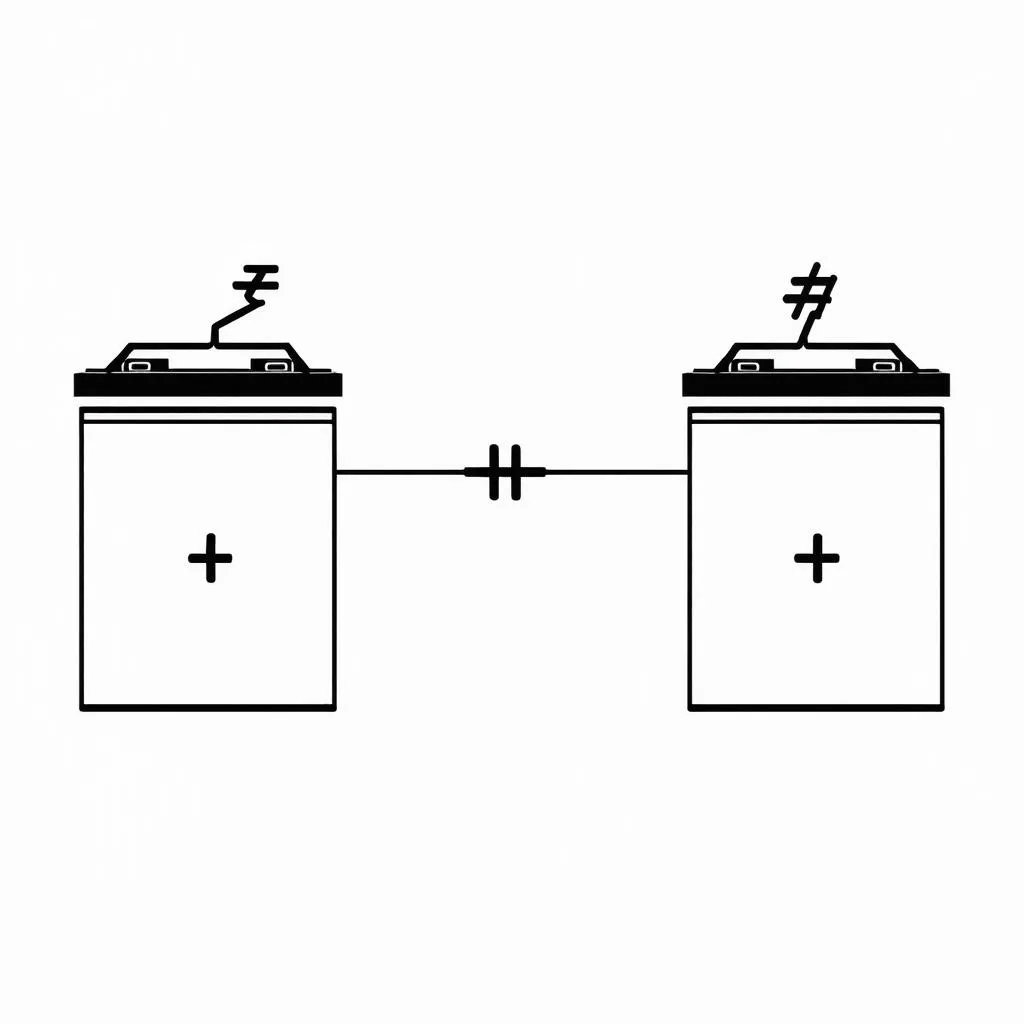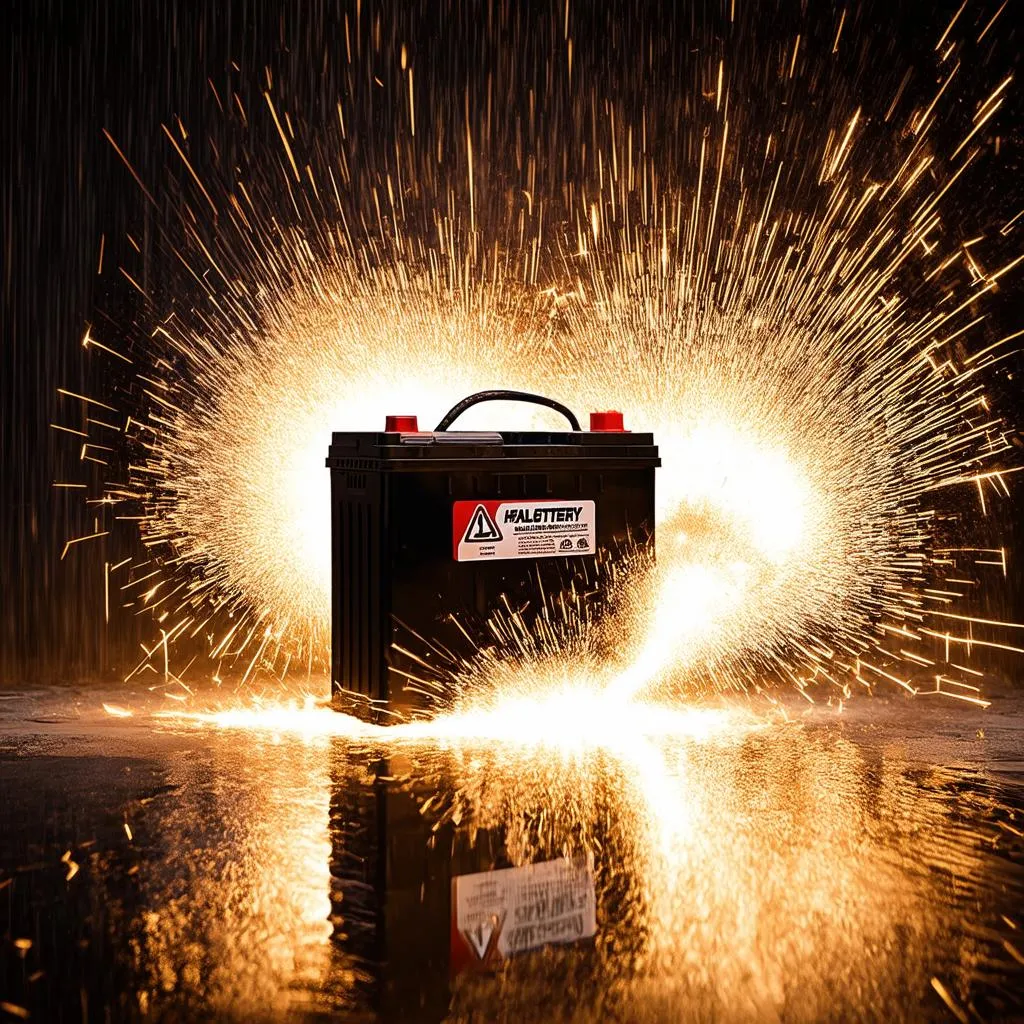Imagine this: You’re at a car meet, and someone boasts about having 100 Car Batteries Wired In Parallel to power their sound system. Your jaw drops. Is that even possible? Safe? Legal? It sounds like a recipe for disaster, right? Well, let’s dive into the electrifying world of parallel battery configurations and see why 100 car batteries is a terrible, no good, very bad idea.
Understanding the Buzz: What Does Wiring Batteries in Parallel Even Mean?
Before we unleash the kraken of electrical engineering, let’s simplify things. Picture a battery as a water tank. The amount of water represents the battery’s capacity (ampere-hours or Ah), and the water pressure represents its voltage (V).
When you wire batteries in parallel, you’re essentially connecting all the positive terminals (+) and all the negative terminals (-) together. This setup is like combining multiple water tanks at the same height, increasing the total water volume (capacity) while maintaining the same pressure (voltage).
So, connecting 100 car batteries in parallel would provide a monstrous capacity, but the voltage would remain at a standard 12V, like a single car battery. Seems harmless, right? Wrong!
Why 100 Car Batteries is a Recipe for Disaster
1. Safety First (or Last, if You Try This): Imagine the sparks, the heat, the potential explosion if one connection goes wrong with that much current flowing! It’s incredibly dangerous and could lead to serious injury or even death.
2. Your Car Will Say “Nope”: Car electrical systems are designed for a specific voltage (12V) and a limited current. This massive battery bank would overwhelm your car’s electrical components, causing irreparable damage.
3. Charging Chaos: Charging 100 car batteries in parallel would require a specialized, high-capacity charger and take an eternity. Talk about inconvenient!
4. Financial Folly: Why spend a small fortune on 100 car batteries, a custom charging system, and potential repairs when you could achieve a similar result with safer, more practical alternatives?
5. Environmental Impact: Disposing of 100 car batteries is a logistical and environmental nightmare. Lead-acid batteries contain hazardous materials that require proper recycling.
 Parallel Battery Diagram
Parallel Battery Diagram
FAQ: You Asked, We Answered!
Can you wire 100 car batteries in parallel to power a house?
Technically, yes, but it’s still a terrible idea! Besides the safety and logistical issues mentioned earlier, household electrical systems operate on 120V or 240V AC, not 12V DC. You’d need an expensive and complex inverter to convert the DC power from the batteries to usable AC power.
What’s a more realistic and safer way to increase power capacity?
Instead of a Frankenstein battery monster, consider these practical alternatives:
- Use a higher capacity battery: Opt for a deep-cycle battery with a higher Ah rating for longer-lasting power.
- Install a dual battery system: This setup uses a dedicated battery for accessories, sparing your starting battery from drain.
- Explore alternative energy sources: Solar panels, wind turbines, or portable power stations offer sustainable and safe power solutions.
Still Considering 100 Car Batteries? Don’t!
Remember that scene in the movie where someone does something incredibly dangerous and everyone yells, “No! Don’t do that!”? This is one of those moments. Wiring 100 car batteries in parallel is not practical, safe, or environmentally responsible. It’s a recipe for disaster, plain and simple.
 Exploding Car Battery
Exploding Car Battery
Looking for More Car Tech Insights?
We’ve got you covered! Check out these related articles:
- Understanding Car Battery Basics
- Choosing the Right Battery for Your Needs
- Dual Battery Systems: Power Up Your Adventures
Need help with your car’s electrical system or diagnostics tools? We’re here for you 24/7! Contact our automotive experts via WhatsApp at +84767531508.
Don’t forget to share this article with your fellow car enthusiasts and help us spread the word about safe and responsible battery practices!